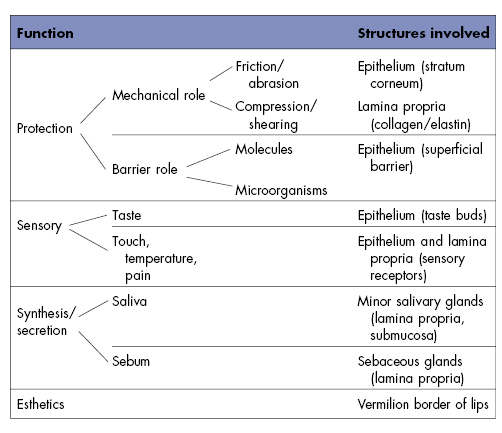1
The functions of oral mucosa
1.1 ORAL MUCOSA: WHAT IS IT AND WHAT DOES IT DO?
Oral mucosa is a mucous membrane, a term used to describe the moist linings of body cavities that communicate with the exterior. These include the oral cavity, nasal passages, pharynx, gastrointestinal tract, and urinogenital regions. In the oral cavity, this lining is called the oral mucous membrane or oral mucosa. The exterior of the body has a dry covering, the skin, which is continuous with oral mucosa at the lips. Structurally, the oral mucosa resembles the skin in some respects and is very similar to the mucous membranes of the esophagus, cervix, and vagina (which will be considered in a subsequent chapter) but is totally different from the gastrointestinal mucosa.
Despite these differences, skin and the different mucosae all consist of two structurally different tissue components: a covering epithelium and an underlying connective tissue. These tissues function together so the various mucosae and skin can be considered as organs.
Form follows function, and it is easier to understand the complex structure of a tissue or organ when its function is known. This is particularly true of the oral mucosa, whose structure reflects a variety of functional adaptations. The major adaptations are a result of evolutionary changes that have taken place over a long time. However, small and usually reversible changes in structure of oral mucosa may be seen in response to function during the lifetime of an individual, but these are not heritable. The functions of oral mucosa and the tissue components subserving those functions are summarized in Table 1.1.
Table 1.1 Functions of the oral mucosa.

1.2 FUNCTIONS OF TH/>
Stay updated, free dental videos. Join our Telegram channel

VIDEdental - Online dental courses


